Iran
Things to DO
Hajij-e Bozorg
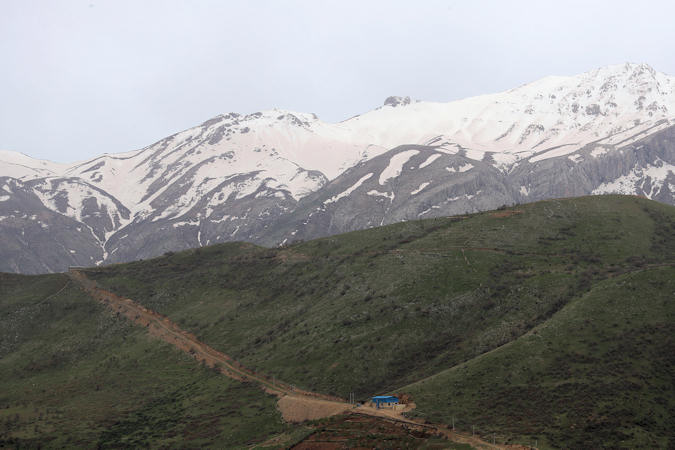 |
|||||
Traveling north from Kermanshah, there is a nice route to Hajij-e Bozorg with the beautiful scenery of the Zagros
Mountains.
Do bear in mind that if you are travelling by car, there is a chance you will be stopped at police checkpoints due to the proximity of
the Iraqi border.
The road passes through the small town of Ravansar, where the majority of locals wear traditional Kurdish clothes, known as
"chuhoranak"and continues towards Paveh.
The real treat however is the road past Paveh towards Hajij village, about 150 km from Kermanshah. Swerving up the mountains over the
Sirvan River and the newly built Darian Dam, its an enjoyable ride.
Construction on the dam began in 2009 and the dam began to fill its reservoir in late November 2015.
Khorramabad
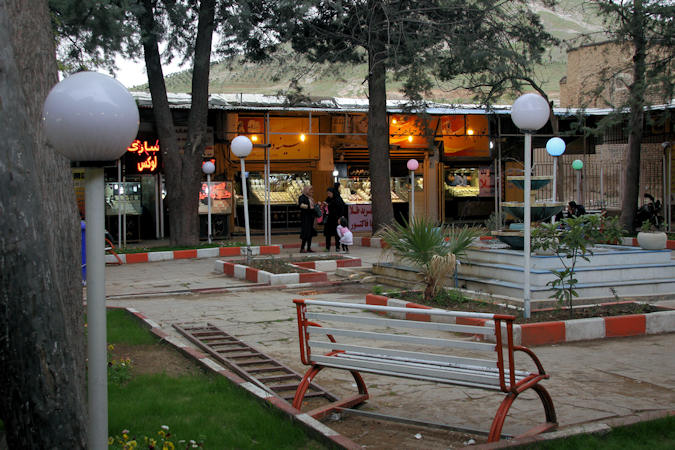 |
|||||
The history of the city dates back to the late third millennium BC and early second millennium BC during the the Elamite period
when it was named "Khaidalou".
The Sassanids (226-651 CE) founded a city named "Shapur-Khwast" on the ruins of Khaidalou and Shapur I (215-270 CE) built a
fortress there which is known today as Falak-ol-Aflak Castle.
The Caravanserai of Mirza Seyed Reza was constructed during the Qajar Dynasty in 1883. It's now called "Bazaar of Goldsmiths".
This is a nice place to start wandering around the main market place in Khorramabad.
Located in the south of Khorramabad dating from from Sassanid era is the Shapuri Bridge. The bridge had 28 arches; five of its
arches are intact and the others have been destroyed by natural factors.
Reconstruction work is going on now.
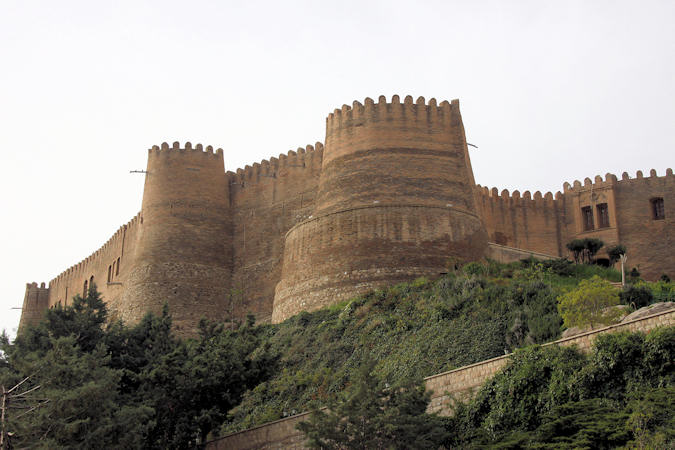 |
|||||
During the Sassanid era the castle was of great importance and Roman prisoners were imprisoned there.
In the 9th century this castle was as the seat of government of Hasanawayhids and as the treasurer in Buyid dynasty in the
10th century due to its strategic position.
The castle was rebuilt in the beginning of the 19th century during Fath-Ali Shah Qajar’s reign and was used as a military detachment
and political prison in the Qajar era.
Falak-ol-Aflak Castle has an area of 5300 square meters. There were twelve towers in the castle, only eight of them have remained.
The height of the tallest wall of this castle is about 22.5 meters from the ground.
There are two museums of anthropology and archeology in the castle which beautifully displays the customs and historical objects of this
ancient land.
Shush
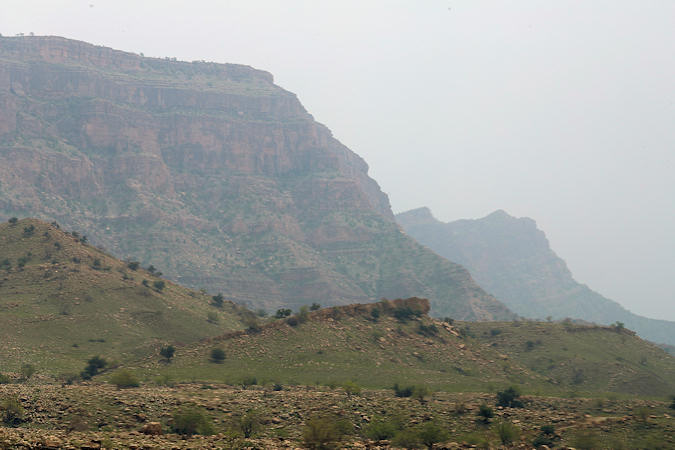 |
|||||
The province of Khuzestan can be basically divided into two regions; the rolling hills and mountainous regions north of the
Ahvaz Ridge, and the plains and marsh lands to its south.
The northern section maintains a non-Persian Bakhtiari minority, while the southern section always had diverse minority groups
known as Khuzis.
The abundance of water and fertility of soil has transformed this region into a rich and well-endowed land.
The variety of agricultural products such as wheat, barley and of course sugar cane — from which Khuzestan takes its name.
The town of Shush suffered during the Iran-Iraq War, when at times the front line was a mere 4 km away.
Few scars are now visible and earlier requirements for official authorisation to visit the Susa site and nearby Choga Zanbil have been
dropped.
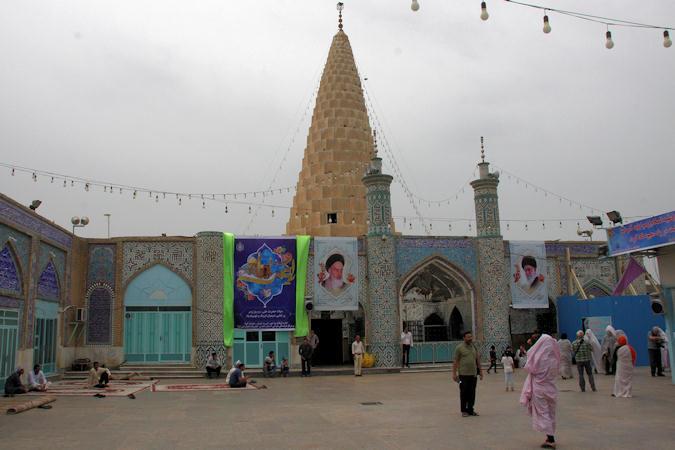 |
|||||
The Tomb of Daniel is the traditional burial place of the biblical and Islamic prophet
Daniel.
Various locations have been named for the site, but the tomb in Shush, is the most widely accepted, it being first mentioned by
Benjamin of Tudela, who visited Asia between 1160 and 1163.
Many pilgrims throughout the centuries came here, especially during times of drought to pray for rain.
This association with water goes back at least to the 12th century when the Seljuk ruler decreed that Daniel's body be put into a (rock)
crystal coffin and suspended from the bridge.
The present shrine has been carefully restored following serious damage by Iraqi bombardment and prior to that, as a result of floods in
1869. The interior has mirror work and a shallow dome and the current shrine is also Qajar in style.
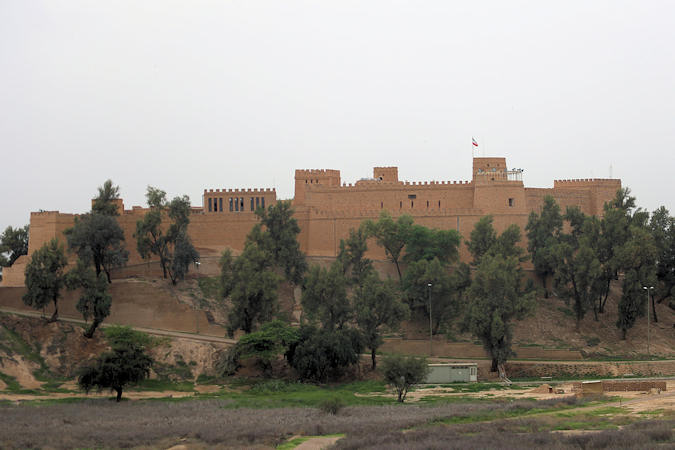 |
|||||
Soon after arriving at Susa, you'll understand why virtually every photograph of Susa shows the French Château de Morgan
constructed to house the archeological teams and it houses now a museum.
The excavation trenches that clearly revealed the foundations of buildings give's now a impression of the grandeur of this ancient
city.
Susa is one of the oldest cities in the world. Excavations have established the existence of urban structures about 4.000 BC., and it
is reasonable that the town, was already the political center of Elam in the fourth millennium.
The Assyrian king Assurbanipal destroyed the Elamite capital between 645-640 BC., but the city was rebuilt by the Persian king
Darius the Great (522-486 BC).
After the fall of the Achaemenid empire and the reign of Alexander the Great, Susa became part of the Seleucid empire.
The city remained important until the thirteenth century AD.
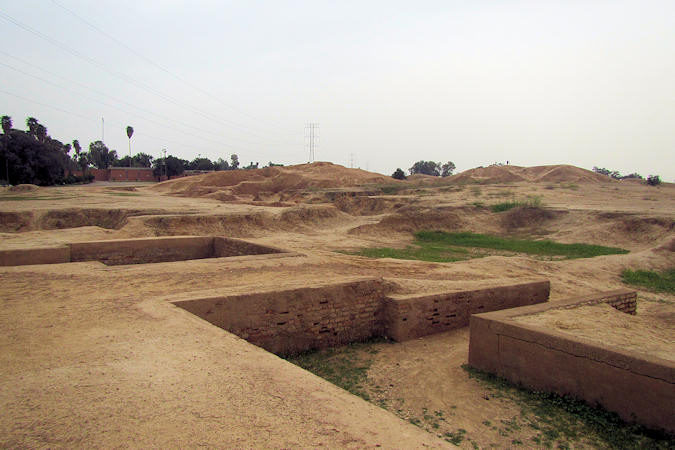 |
|||||
At Haft Teppeh, about 16 km south of Shush the remains of the Elamite city of Kabnak were discovered in 1908, and
excavations are still carried out.
The city of Kabnak is mentioned as an important political centre during the reign of the Elamite king Tepti-Ahar, the last king
of the Kidinuid Dynasty ruling in the 15th century BC. He may also have been buried in the city.
Excavations at Haft Teppeh revealed a large temple founded by Tepti-Ahar where the god Kirwashir was worshiped.
Beneath the temple lay a subterranean funerary complex intended for the king and his family. Skeletal remains were found in the tomb,
though it is not certain they belong to royalty.
Another large structure found at the site was perhaps the foundations of a ziggurat, along with courtyards and suites of rooms.
A small Museum opened in 1973 is used to display some of the findings.
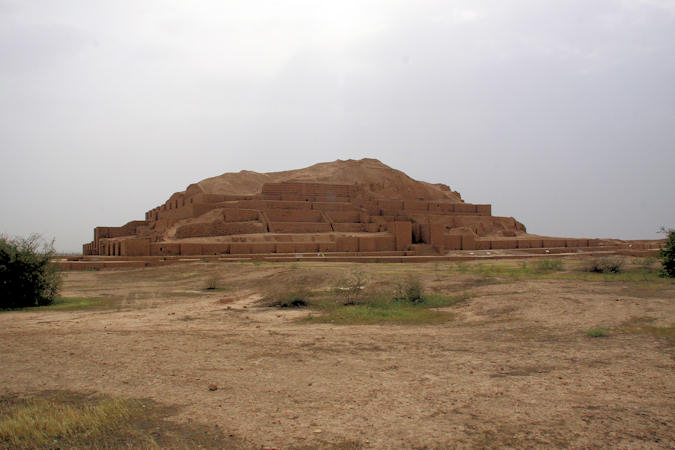 |
|||||
Chogha Zanbil "basket mound" lies approximately 30 km southeast of Susa and is one of the few existing ziggurats
outside Mesopotamia.
It was built about 1250 BC by the king Untash-NapirishaInshushinak.
The complex is protected by three concentric walls which define the main areas of the 'town'.
The inner area is wholly taken up with a great ziggurat dedicated to the main god, which was built over an earlier square temple with
storage rooms also built by Untash-Napirisha.
The middle area holds eleven temples for lesser gods. In the outer area are royal palaces, a funerary palace containing five subterranean
royal tombs.
Although construction in the city abruptly ended after Untash-Napirisha's death, the site was not abandoned, but continued to be
occupied until it was destroyed by the Assyrian king Ashurbanipal in 640 BC.
Shushtar
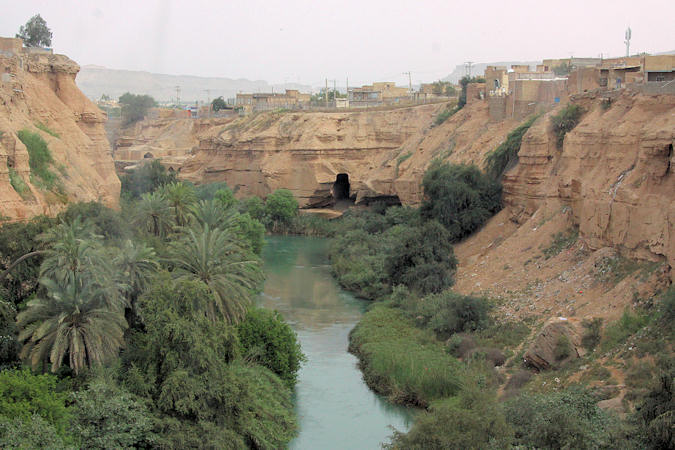 |
|||||
During the Sassanian era, (224–651 AD) it was an island city on the Karun river and selected to become the summer capital.
The river was channelled to form a moat around the city, while bridges and main gates into Shushtar were built to the east, west, and
south.
A system of subterranean channels called Ghanats, which connected the river to the private reservoirs of houses and buildings,
supplied water for domestic use and irrigation, as well as to store and supply water during times of war when the main gates were closed.
Traces of these ghanats can still be found in the crypts of some houses.
The Imamzadeh Abdullah has two minarets on either side and these are adorned with tile work.
The current structure of the mausoleum is the effect of Mehdi Ali Khan, the governor of Shushtar during the reign of Shah Abbas
Safavid in the year 1593 AD.
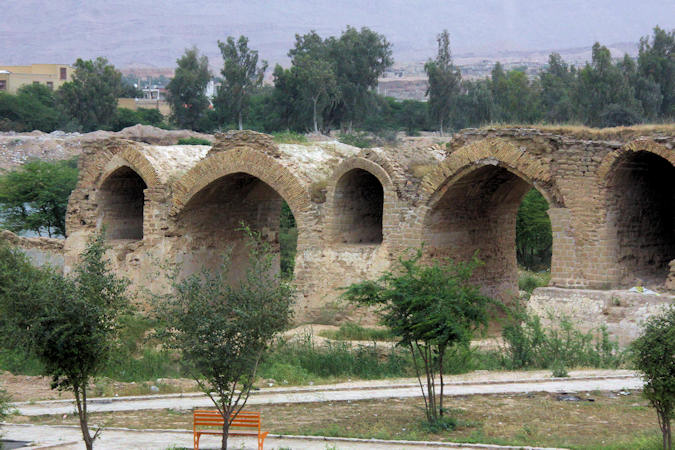 |
|||||
The Band-e Kaisar was an ancient arch bridge, and the first in the country to combine it with a dam.
When the Sassanian Shah Shapur I defeated the Roman emperor Valerian, he is said to have ordered the captive Roman soldiers
to build this large bridge and dam.
The approximately 500 m long overflow dam over the Karun, Iran's most effluent river, was the core structure of the Shushtar
Historical Hydraulic System from which the city derived its agricultural productivity, and which has been designated by the
UNESCO as Iran's 10th World Heritage Site in 2009.
In the 1930's there where some 40 mills here grinding silica, sugercane and cereals. Some mills have been restored as a museum.